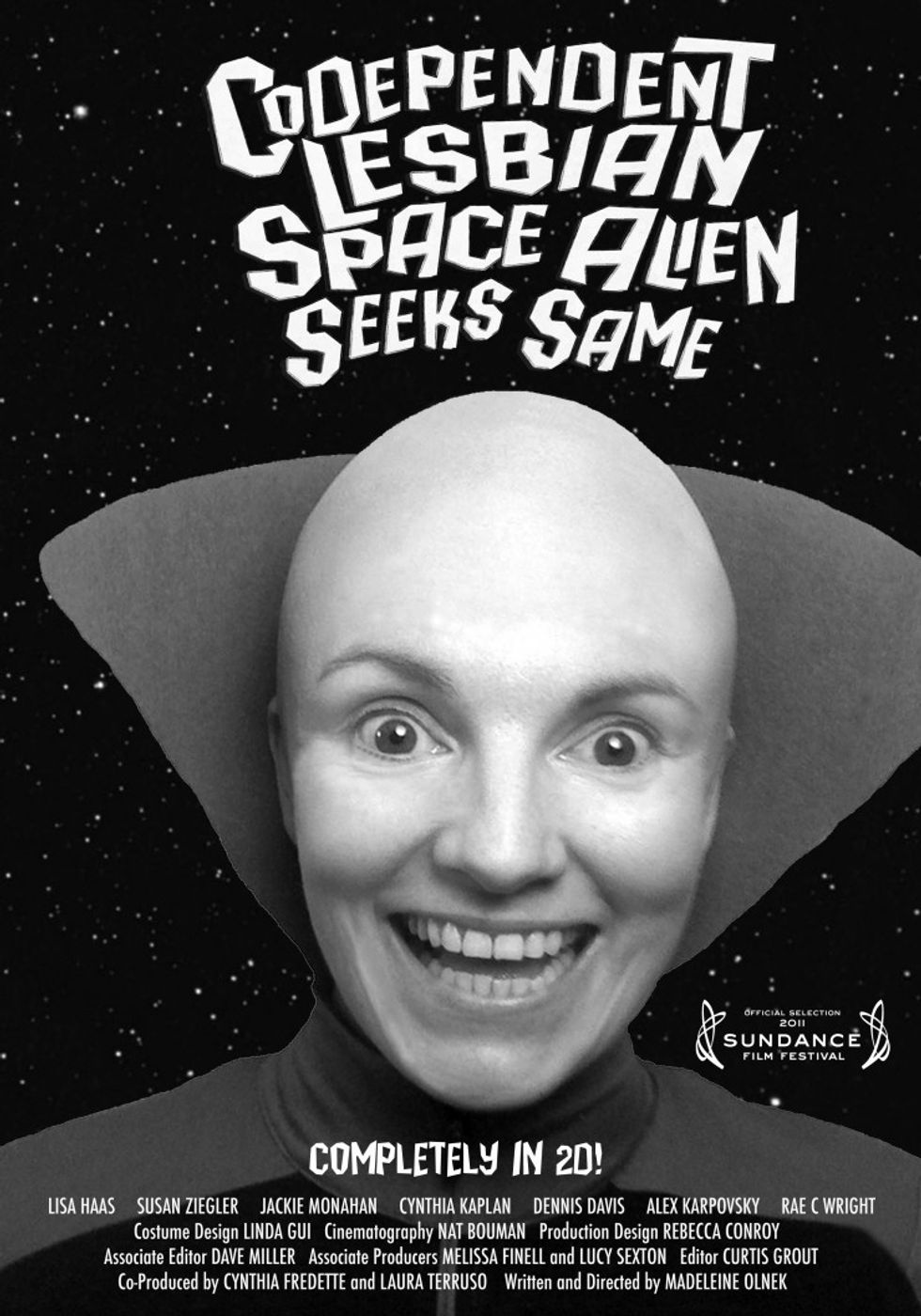Designing Key Art for the Digital Marketplace: IFP Film Week Experts Share Their Tactics

Yesterday IFP Film Week brought together aesthetic experts to discuss key digital art and how it should differ from the physical art representing a film. Sundance's Director of Digital Initiatives Joseph Beyer, Director of American Astronaut Cory McAbee, Zak Soreff of Sawyer Studios, Ryan Werner, and Director of The Foxy Merkins Madeleine Olnek traded personal stories and industry secrets in front of a packed audience. For their stories, you're going to have to wait for the IFP video to get released. For their best advice, read on.
This panel drove home several completely contradictory messages, all in the space of one engaging hour. The first was that now you need more art than ever, to keep your audience engaged through daily social media updates both before and after your film is released. The second was that films should adhere to the same few images, so that they become recognizable brand markers. What's a filmmaker to do?
Maybe both, depending on the project and the phase of outreach. Cory McAbee used a user-generated content campaign to develop the club slash production studio Captain Ahab's Motorcycle Club ("participation equals membership,") which now has diverse graphics from around the world. Here are a few graphics:
Captain Ahab's can be seen as a massive experiment in crowdsourcing (with the support of key contributors you might have heard of like The Sundance Institute and The New York Lincoln Center.) From the Captain Ahab's website:
The club is actively being developed through music, graphics and social interaction. Our online music library features a growing collection of songs written by Cory McAbee. All tracks are available for free download. Additional tracks and mixes for these songs are being generated and posted by club members. McAbee has been performing live to these mixes throughout the world. He will continue to do so as the tracks continue to evolve, develop and mutate. Members are welcome to use this material for non-commercial purposes. This “music department” will produce live events, club gatherings, and eventually a feature film soundtrack.
McAbee used the opposite approach with American Astronaut, a film with a decidedly different aesthetic and few key images:
Fewer, similarly-designed images can catch viewers' eyes easily and build recognition quickly if consumers are likely to see the artwork only a small number of times. For indie projects, the diffusion of images (like the addition of too many characters to a film) can confuse our delicate potential audiences, leading casual browsers to think they're seeing altogether different films being promoted (reading is so difficult these days.)
Of course, in the end, the decision is subjective, and should be made depending on the wider outreach strategy, the stills available (or lack thereof) and content of one's film.
Another catch-22 discussed during the panel was VOD vs. theatrical art. As much as it benefits a film to project a singular identity, it's rare for a single design to suit both purposes well.
Take a look at the terrible photo below (apologies; I was sitting on the side of the room and used Photoshop to adjust the perspective). Zak Soreff of Sawyer Studios explained the reasoning behind each film's changing artwork. The experience of viewing a poster inside a lightbox at the theater is very different from the experience of browsing titles on Netflix, and key art must adjust accordingly. Besides the obvious (smaller space, bigger images) the VOD art typically focuses more on celebrity, genre, and easily conveyed aspects of the storytelling:

Madeleine Olnek emphasized the importance of genre, illustrating the difference between laugh-out-loud funny posters and Hollywood's idea of a "funny poster" (i.e., straight-guy-looking-exasperatedly-at-audience-while-comic-relief-does-something-usually-not-funny-on-the-side). Here are Olnek's posters from the 2011 feature, Codependent Lesbian Space Alien Seeks Same:
If you're having trouble deciding whether to make diverse or singular, well-branded art, whether to design for theatrical and VOD separately, or whether to go with mainstream or indie world's genre aesthetics, feel out your options with test audiences and smaller campaigns. Or consider an alternative. As one panelist put it:
Going out and being a living human being is important as well. Facebook and Twitter are one thing, but you might get more work by going out and getting drunk every night.
So do that, too.
What do you think about marketing films through digital art? Have any branding advice to share?

















